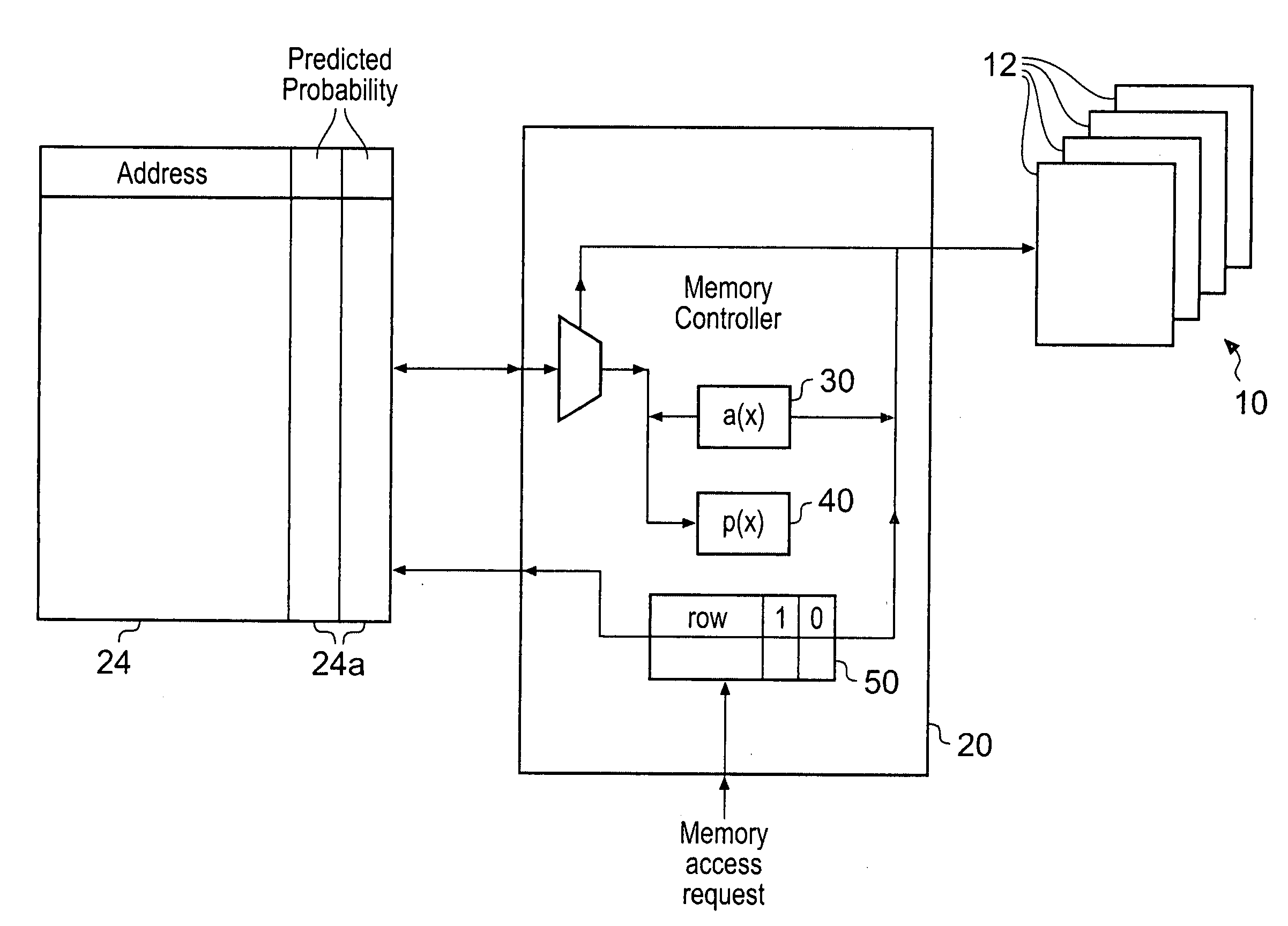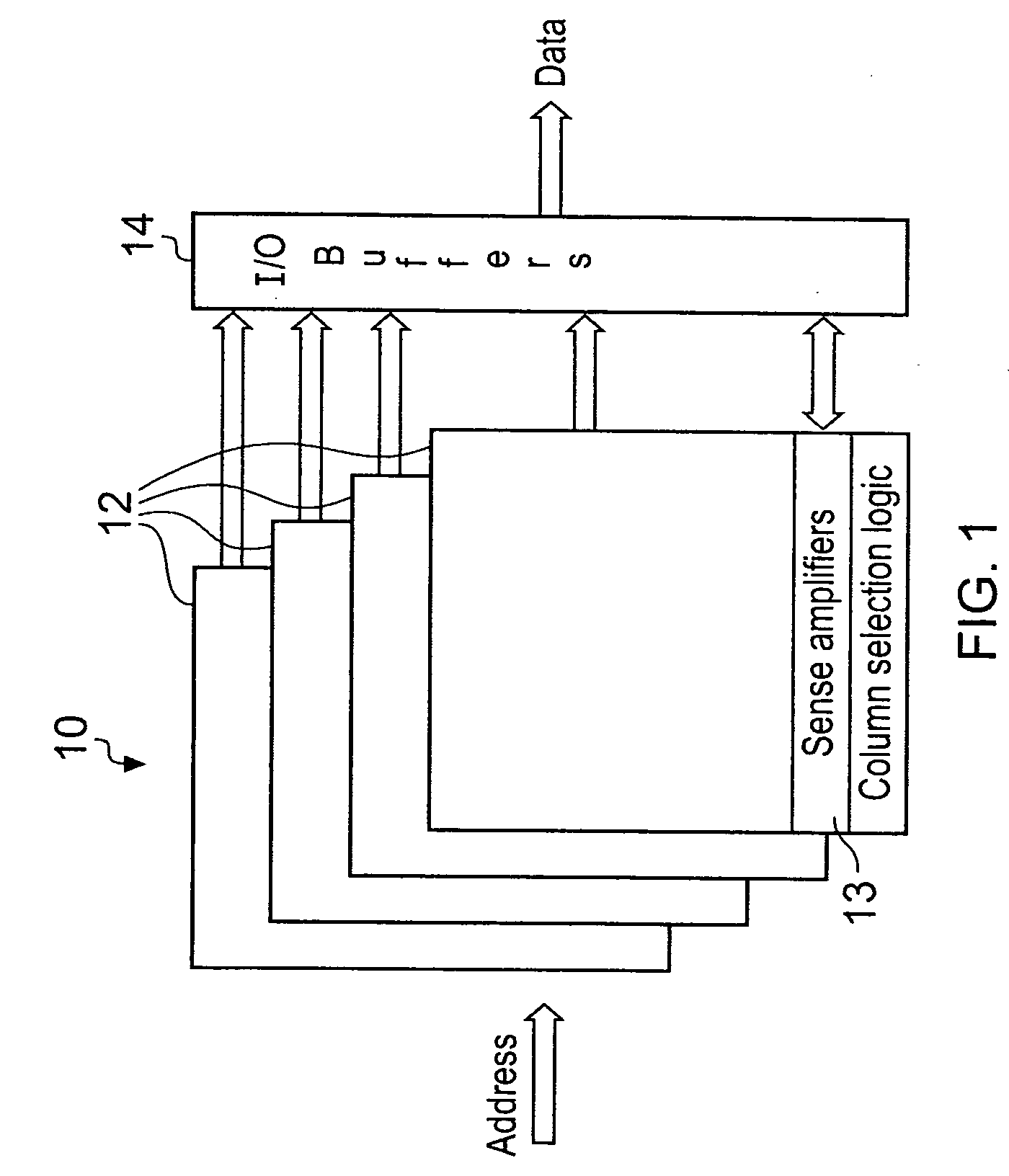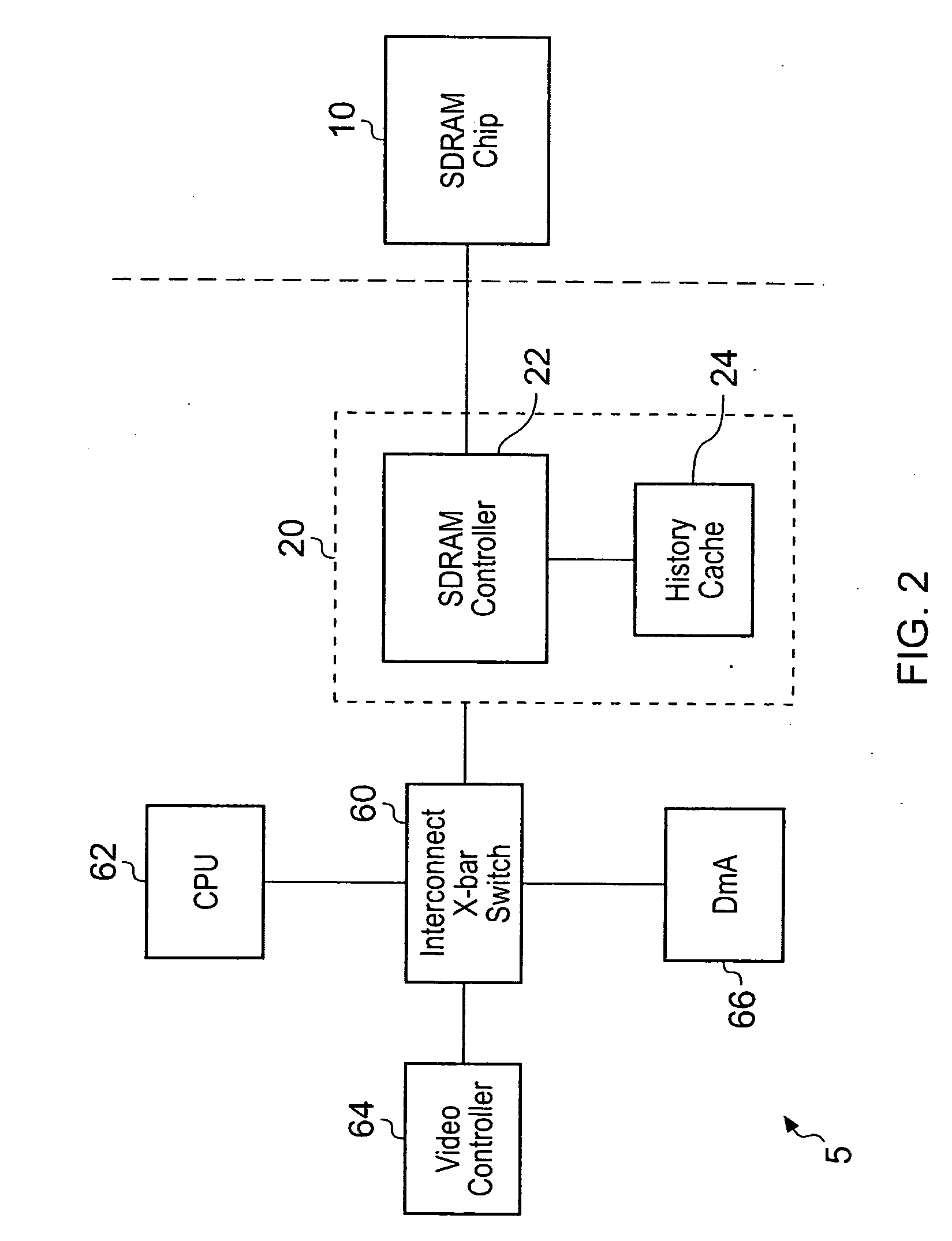Accessing memory arrays
a memory array and array technology, applied in the field of data processing, can solve the problems of not being power efficient, unable to open a closed row, and unable to close the next row, so as to increase the probability of correctly, increase the probability of said stored prediction, and impact heavily on storage area and power
- Summary
- Abstract
- Description
- Claims
- Application Information
AI Technical Summary
Benefits of technology
Problems solved by technology
Method used
Image
Examples
Embodiment Construction
[0058]FIG. 2 shows a system on chip 5 having a plurality of masters including a central processing unit 62, a video controller 64 and a DMA 66. These are interconnected via interconnect 60 and they communicate with an external memory portion 22 and a data store 24 for storing a history of data accesses.
[0059]External memory 10 is a SDRAM chip such as the one shown in FIG. 1. In order to increase performance of such a memory it is advantageous to leave a row open if a subsequent memory access is to be to the same row and to close the row if it is not to the same row. In this embodiment memory controller 20 has a history data store 24 associated with it. This data store stores a history of previous recent memory accesses and an indication of the probability of subsequent accesses to these accesses being in a same row. This therefore provides a dynamic prediction method whereby data of recent memory access patterns is stored and used to predict future one. Memory accesses are generally...
PUM
 Login to View More
Login to View More Abstract
Description
Claims
Application Information
 Login to View More
Login to View More - R&D
- Intellectual Property
- Life Sciences
- Materials
- Tech Scout
- Unparalleled Data Quality
- Higher Quality Content
- 60% Fewer Hallucinations
Browse by: Latest US Patents, China's latest patents, Technical Efficacy Thesaurus, Application Domain, Technology Topic, Popular Technical Reports.
© 2025 PatSnap. All rights reserved.Legal|Privacy policy|Modern Slavery Act Transparency Statement|Sitemap|About US| Contact US: help@patsnap.com



